Edinburgh's Castle dominates the city, even on a cloudy day, as it has since 12th century. From the Wars of Scottish Independence to the Jacobite Uprising, it has been besieged 26 times according to a 2014 survey, perhaps more than any other military fortress in the United Kingdom. Some of its cannons can shoot balls two miles!
Here's what the castle looks like on a sunny day.
With time to kill before our 1 p.m. admission, we walked down "the mound" to check out Randox, the busy walk-in clinic where we had to test negative for covid a day prior to our return home. It's busy no more as the US, like most of the rest of the Western world, finally lifted that onerous and useless requirement the day AFTER our flight.
On our way back up the mound, I peeked at the Writer's Museum.
Robert Louis Stevenson's initials decorate the staircase.
Walter Scott rocked this horse as a child.
This Robert Burns collage wasn't even the oddest depiction of one of Scotland's three great men of literature.
That honor belonged to this peculiar, computer-generated tapestry of Stevenson, Scott & Burns.
We approached the castle from a side street.
Workers were erecting scaffolding for rock concerts in July just outside the entrance.
It's probably great to be in the audience for Texas and Elbow, but all that metal does detract from the setting.
Fortunately, the rain had stopped.
A Victorian statue of King Robert the Bruce guards the drawbridge. In 1314, he defeated England's King Edward II in the Battle of Bannockburn. I wonder if he's where my father and I get our middle names.
You can't beat the views. This one looks west.
See Thom waving?
Here's looking south from the highest elevation.
A small chapel provided gunners and soldiers a convenient place to pray in between rounds.
Here's the side of the National Scottish War Memorial
. . . and the front. No photos allowed inside but it's a solemn, beautiful place designed by Robert Lorimer. Remember him from the Thistle Chapel?
The castle hasn't been used as a residence for centuries. This building houses the Honors of Scotland, more commonly known as the crown jewels. Walter Scott found them buried in a chest near the men's room another level down. Busy guy, that Walter!
The UK's Royal Coat of Arms, Scottish version. The motto--Nemo me impune lacessit--means "No one provokes me with impunity."
Scotland's King James IV had the Great Hall, with its remarkable wooden roof, built for entertaining just two years before he was killed fighting Henry VIII's troops in the disastrous Battle of Flodden. He was just 25.
For some reason, this fierce Scottish soldier is carrying a baby.
The Scots have a reputation for treating their prisoners of war more kindly than most. The dungeon looks almost comfortable if you ignore the dark and dampness.
A statue of a controversial World War I hero looms large over Hospital Square. Some scholars say that Field Marshall Douglas Haig sacrificed too many British lives in battles that defined senseless carnage at the Somme and Passchendaele. They made him an Earl anyway.
Biking in Edinburgh really develops your calves and thighs!
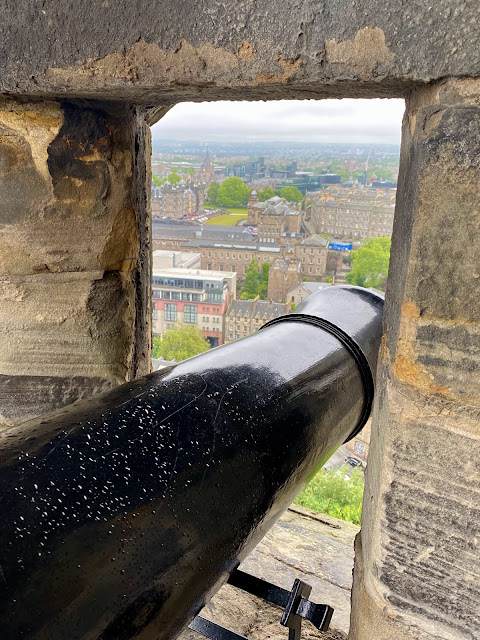
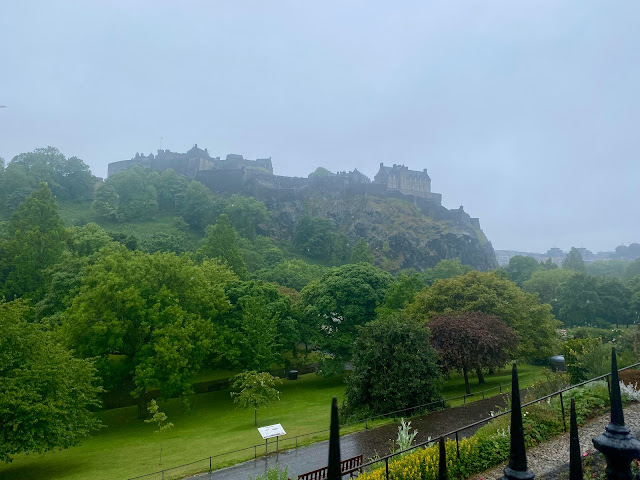














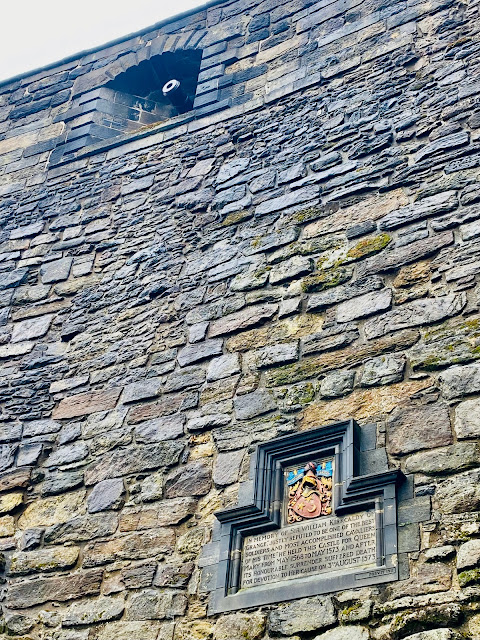

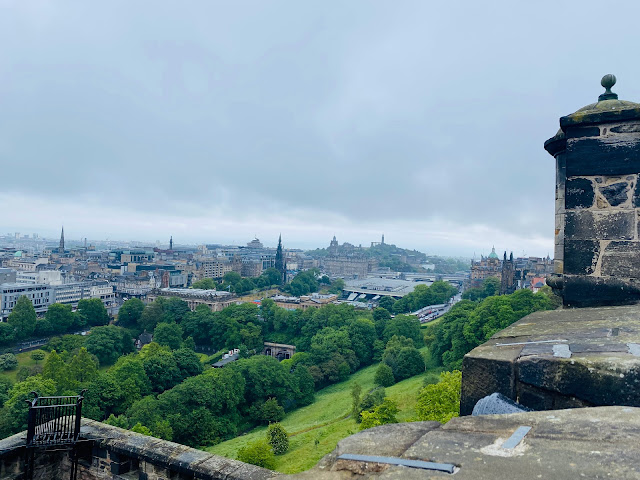








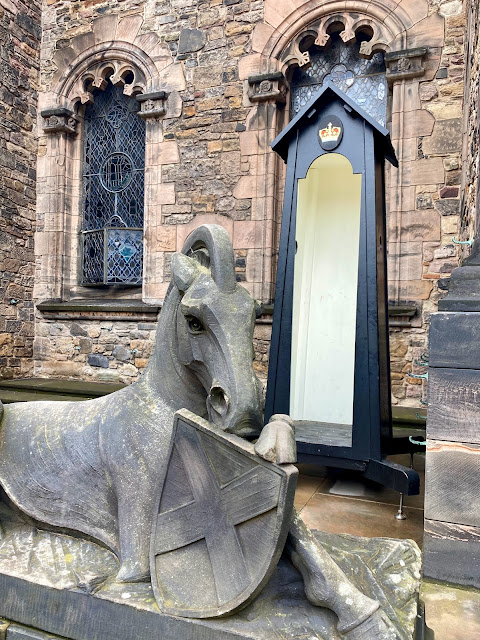



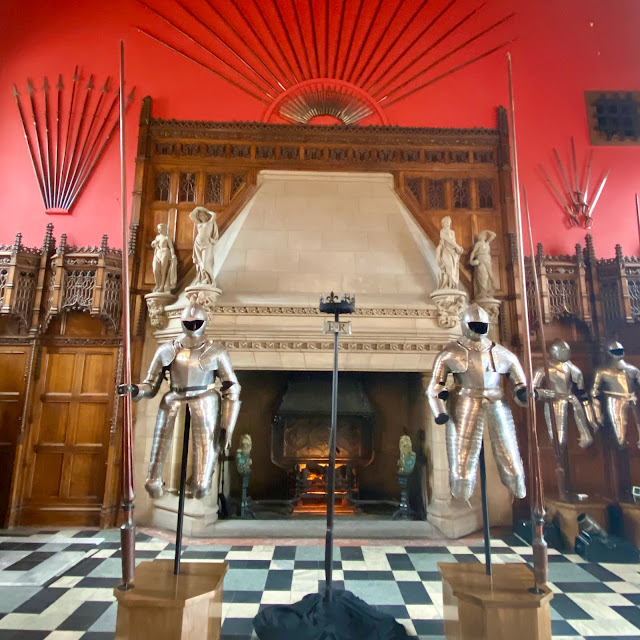


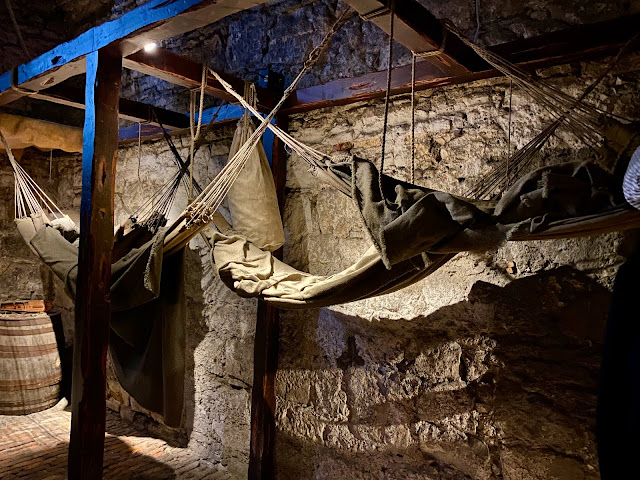



No comments:
Post a Comment